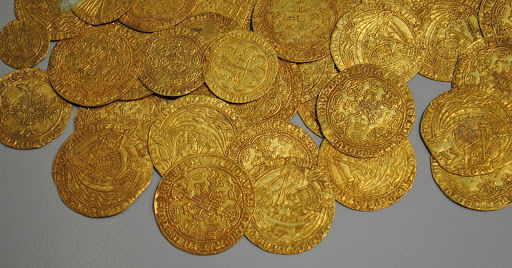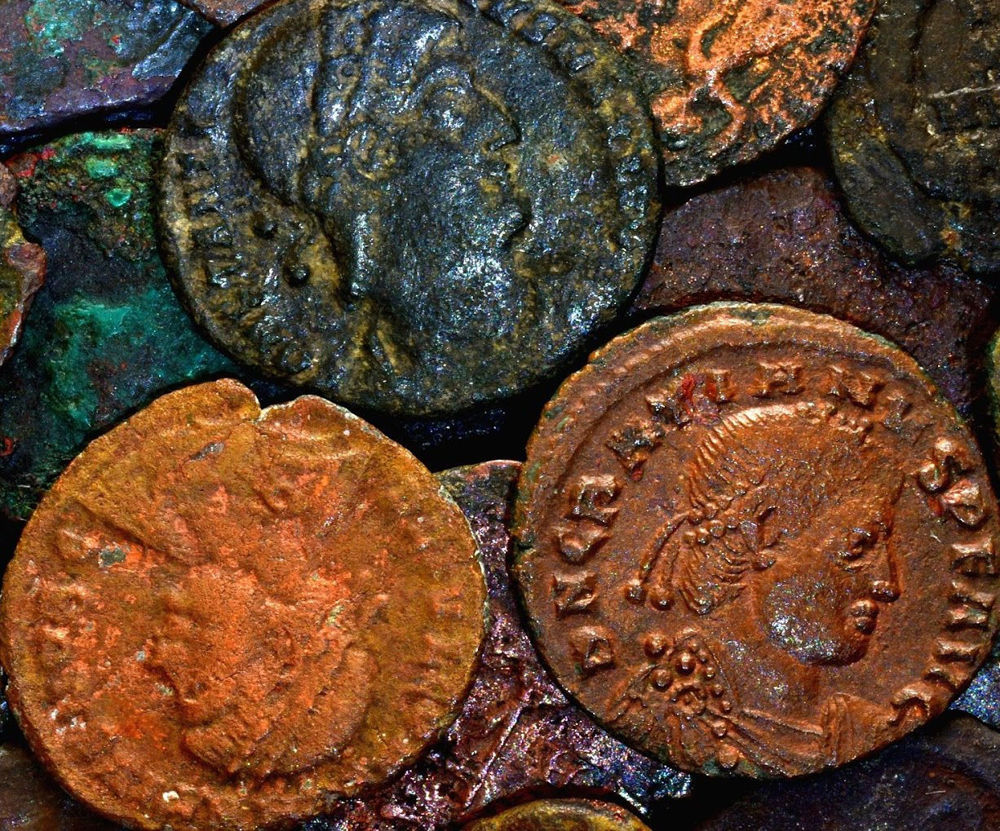Posted on June 23, 2021


Numismatic coins are rare or collectible coins whose value goes beyond their metal content, unlike bullion coins which are sold for their precious metal values. For example, a rare 1 oz gold coin from the 18th century will typically be worth more than an ounce of gold bullion.
Collecting coins has long held an appeal for certain people, and famous coin collectors of the past include Thomas Jefferson, Louis XIV, and even Augustus Caesar.
Numismatic coins are distinct from bullion coins which are typically purchased purely as an investment. Investors looking to hedge against cash inflation or gain exposure to the price action of precious metals typically do so with bullion coins rather than numismatic coins. For a bullion investor, the type of gold coin they’re investing in is generally less important than the ownership of the gold itself.
This is not the case with numismatic coins. While any particular numismatic coin might fluctuate in value based on popularity, collector interest, and other factors, it’s a mistake to think of collectible coins as commodities like gold or oil. A commodity, by definition, is fungible, meaning any individual unit of it can be replaced with any other unit without affecting price. Numismatic coins are definitely not fungible.
It’s more difficult and expensive to assess the value of rare and collectible coins, and they are not eligible for purchase within a precious metals IRA, unlike many bullion coins. Coin collectors rather than investors primarily buy numismatic coins.
However, that’s not to say that there isn’t a lucrative market for numismatic coins. With a less efficient market than bullion coins, many numismatic coins are mispriced, presenting excellent opportunities for those in the know.
Beyond these considerations, numismatic coins are often quite fascinating, and their study and collection can be an incredibly rewarding experience in its own right. These coins are steeped in history, whether it be coins from the early days of the United States or coins from the famous empires of the past.
These two coins would, of course, be sorted differently, as there are two types of numismatic coins: certified coins and raw coins.
Let’s take a look at these different categories as well as some essential tips when it comes to exploring the world of numismatic coins for yourself.
Certified coins are graded and evaluated using the Sheldon Coin Grading Scale, a 70-point scale ranging from Poor to Mint condition with 68 grades in between. The American Numismatic Association has used this scale to measure all certified coins since the 1970s.
Coins are usually graded by a third-party service such as NGC or PCGS. Professional graders consider everything from nicks on the rims of the coins, discoloration, scuff marks, quality of shine or luster, corrosion, and other factors. Coins suitable for grading are relatively modern, dating back as far as the colonial era in the 1600s.
One of the most valuable U.S. numismatic coins is the 1933 Saint-Gaudens double eagle, a gold coin with a face value of $20. The actual value far outweighs the nominal value, as a complete set of these coins with a grading of 2 (Fair) on the Sheldon Coin Grading Scale is currently valued at $5,500. Coins graded at 20 (Very Fine) are valued at $9,000, breaking the million-dollar mark at grade 66 (Mint State).
The huge margin between the different grades highlights the importance of a numismatic coin’s condition on its value. Investors making purchases based on their personal evaluations of these coins can run the risk of making a poor investment or ignoring fairly-priced coins.
Common certified coins include:
There are many other examples of certified numismatic coins, with the market largely focused on coins minted in the United States between the 1650s and the modern day.
Older coins can be found in the “raw” or unclassified category. With fewer individual examples and less known about the minting process and standards of the time, not to mention an uncertain mintage, these coins can be more challenging to evaluate. Generally, their history is more important than their appearance.
 While NGC, the world’s largest coin-grading service, has recently started grading these coins, ancient coins are most commonly not graded by anyone, hence the term uncertified or raw.
While NGC, the world’s largest coin-grading service, has recently started grading these coins, ancient coins are most commonly not graded by anyone, hence the term uncertified or raw.
However, not all raw coins are ancient. In cases where a coin isn’t worth enough to be graded on its own, it will typically go unclassified. This is often the case with incomplete sets of Buffalo Nickels or Indian Cents, for example.
Common examples of raw or uncertified coins:
Again, investors trying to evaluate coins themselves run the risk of mispricing a purchase or even falling prey to scams. We recommend that coins should be sent for grading or taken to an expert to evaluate before purchasing. As the grading scale cannot be applied to many older coins, it’s often necessary to find an expert knowledgeable in the particular type of coin you need to evaluate.
Simply buying coins because they look old and interesting can lead to misunderstandings -- for a simple example, an old coin stamped “the United States of America” could be mistaken for antique currency but was actually a commemorative coin or a medal instead.
Obviously, counterfeit coins are an issue as well, as older coins have none of the modern anti-counterfeiting measures found in today’s bullion coins.

The most straightforward category to invest in is certainly the certified category. The method of grading and evaluating these coins is extremely precise, and as pricing is more easily achieved and agreed upon, there’s usually a more liquid market for coins in this category. (In other words, a graded and certified coin is closer to a fungible commodity.)
The uncertified category can come with the added risk of mispriced coins when investors do not or simply cannot go through the proper channels. Still, of course, the allure of coins many hundreds or even thousands of years old is hard to resist for die-hard coin collectors.
In either case, it’s crucial for serious investors and collectors to either have their coins graded or taken to an expert to evaluate. While not all raw coins can be graded on the Sheldon Scale, a coin expert will always be able to give their own evaluation and shield investors from poor decisions, as these coins can often “look” more valuable than they really are to the untrained eye.
Of course, when investors take the precautions to grade or evaluate their coins, they will find themselves entering a fascinating world of colonial and even ancient history and perhaps coming across some truly valuable and profitable collector items in the process.